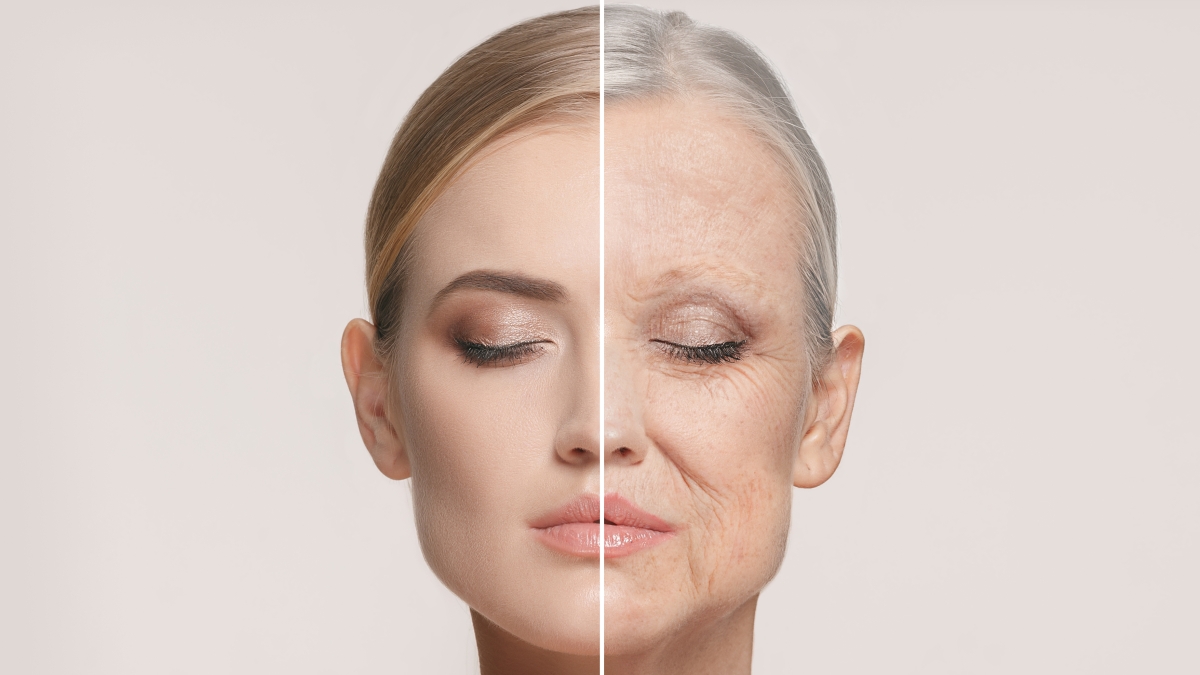Being one of the beautiful people has its benefits, but according to a recent study, living longer may not be one of them.
On the other hand, those not blessed with the best facial features suffer what has been described as an "unattractive penalty" — with women living about two years less and men living one year less than the average person.
That’s what Arizona State University's Connor Sheehan and Dan Hamermesh, a researcher at the University of Texas at Austin, discovered after an eight-month study focused on the link between facial attractiveness and life span. The original data was collected from 1957–2022.
Sheehan is an associate professor at ASU’s T. Denny Sanford School of Social and Family Dynamics. Hamermesh is a labor economist who wrote the book "Beauty Pays: Why Attractive People Are More Successful." The researchers co-authored the study.
ASU News spoke with Sheehan about the link between looks and longevity and, more importantly, the need to address appearance-based discrimination.
Note: Answers were edited lightly for length and/or clarity.
Question: Why did you embark on this study?
Answer: I've long admired my co-author Dan Hamermesh's work on how physical attractiveness impacts our lives. When we met at a conference, I pitched this study idea, combining our expertise to explore often-overlooked social dynamics, (such as) how attractiveness influences longevity. It's a topic with far-reaching implications for unearthing and addressing societal biases.
Q: There have been other studies around attractiveness. What makes yours different?
A: Few have focused on facial attractiveness and longevity. Our study stands out due to its comprehensive, lifelong approach. We combined precise attractiveness measures based on senior yearbook photos with detailed longevity data spanning more than 60 years. This unique dataset allowed us to examine long-term impacts of facial attractiveness in high school and lifelong longevity.
Q: How was the study done?
A: The study was comprised of more than 8,000 people who graduated high school in Wisconsin in 1957. Years later, the study’s designers went back and identified the yearbooks for the high schoolers and had 10 trained evaluators born roughly the same years as the participants rate the respondent’s attractiveness.
These ratings were then averaged and standardized. The ratings have been used before to predict income, among other things. However, we used these ratings to predict and calculate how long the respondents would live after being linked to the National Death Index (through 2022), which is a dataset of all deaths in the U.S.
Q: Yikes! The results were based on high school yearbook photos. Who looks good in their high school yearbook?
A: I certainly don’t think I looked good in my senior photo, and I know a lot of people feel that way. However, the key to our study was the relative differences in attractiveness across the sample. That is, what matters is the variability of attractiveness. This allowed us to examine how perceptions of attractiveness were related to how long people lived.
Q: What features were used to evaluate a person's facial attractiveness?
A: Notably, while attractiveness is somewhat subjective, there is general agreement among us on what is good-looking and what isn’t.
For instance, research consistently concludes that facial symmetry is important across cultures. Previous research has also found that even infants tend to hold their gaze longer at more conventionally rated attractive faces than others.
Q: What were your findings?
A: Our study revealed a concerning link between perceived facial unattractiveness and longevity. Individuals rated as less attractive in their yearbook photos tended to have shorter lifespans. These findings were statistically significant even after we adjusted for differences in income, education, marital status, body mass index and other important factors.
Women rated least attractive in high school yearbook photos lived about two years less than their more attractive counterparts, while for men, this difference was about one year. The stronger effect for women likely reflects the disproportionate social pressures and judgments women endure regarding their appearance.
Q: What else may have contributed to these results?
A: Other factors manifest in dating and marriage. For instance, previous research has indicated that women who are perceived as less attractive tend to marry men who earn less and have less education.
Q: You also measured the monetary cost of being unattractive. How do you explain that?
A: Given that there are life expectancy differences across levels of attractiveness, we then calculated how much less social security people rated as less attractive would receive given their shorter lives. Unattractive women could expect to receive about 6% less social security benefits than other women, i.e., about $250,000 less over their lives.
Q: While attractiveness doesn’t impact longevity directly, there are indirect pathways by which attractiveness could influence a person’s quality of life. What are they?
A: Notably, attractiveness could directly influence longevity as considerable research has found that there is a genetic component to attractiveness.
There has been increasing conversations, particularly on social media, about “pretty privilege” — or how more attractive people are treated better in small, quotidian day-to-day interactions. But there is also extensive social science that demonstrates that more attractive people earn more, get treated better by teachers, are less likely to commit crime and, when they do, receive lighter sentences. They are more likely to be elected as politicians, among other things.
Q: Were you surprised to learn that attractive people did not necessarily live longer?
A: Yes, of course. We were surprised to learn that the highly attractive received no real longevity benefit given that there are so many other benefits for them, including income, grades, marriage.
Q: What are the social implications of your results? How do your results relate to broader issues of discrimination and health disparities?
A: More broad issues of discrimination and health disparities are based on more systemic and historical structures than attractiveness, but we show that there is a considerable health disparity that is contingent upon level of attractiveness. Importantly, the implications of attractiveness for health and longevity are likely intersectional and amplify existing health disparities.
Our results call for broader efforts to address unconscious biases in various sectors, from health care to education and employment.
Thus, our study emphasizes the need for more inclusive and equitable social structures, regardless of a person's level of attractiveness.
More Health and medicine

Innovative, fast-moving ventures emerge from Mayo Clinic and ASU summer residency program
By Georgann YaraIn a batting cage transformed into a custom pitching lab, tricked out with the latest in sports technology, Charles Leddon and his Mayo Clinic research teammates scrutinize the…
Is ‘U-shaped happiness’ universal?
A theory that’s been around for more than a decade describes a person’s subjective well-being — or “happiness” — as having a U-shape throughout the course of one’s life. If plotted on a graph, the…
College of Health Solutions medical nutrition student aims to give back to her Navajo community
As Miss Navajo Nation, Amy N. Begaye worked to improve lives in her community by raising awareness about STEM education and health and wellness.After her one-year term ended last month, Begaye’s…

